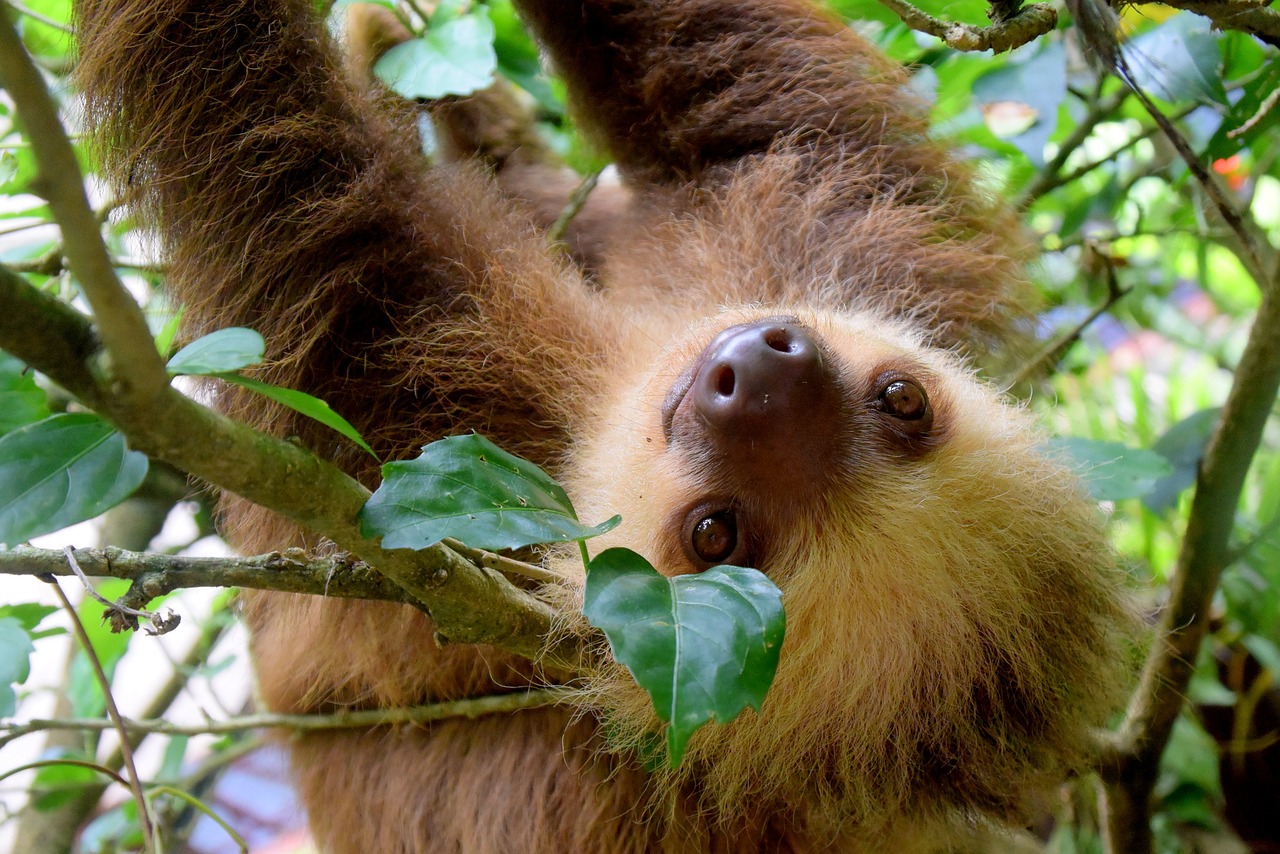
They’re hairy, lazy, and a little bit ugly, but everyone loves the stupid face of a sloth—especially the kids! They’re the epitome of the Pura Vida lifestyle and, luckily for you, heading to Costa Rica means you’ll get the chance to see sloths hanging around in their natural habitat and kicking back in the ways that only a sloth can.
So, if you love everything about those sweet and sluggish little animals, we’ve rounded up the best places to see a sloth in Costa Rica. Read on to discover how to spot them (despite their excellent camouflage), what is the habitat of the sloth in Costa Rica, and the best places to see them!
There are two distinct species of sloth in the country, and when asking where to see a sloth in Costa Rica, much will depend on which sloth you mean. The Hoffman’s two-toed sloth is nocturnal, so if you want to catch one of these critters, you’ll have to plan a night trip. However, the Brown-throated three-toed sloth can be spotted lazily going about its business during the day.
Both species of sloth are native to the jungles of Costa Rica, and they live in dry, humid, riparian and old secondary forests alike. They can even be found at elevations of up to 3000 meters, however the three-toed sloths don’t have the thick fur of their two-toed cousins, and so are much less common at in these colder climates.
The habitats of the sloth in Costa Rica often overlap with human settlements, and you’ll find them in the wild in Guanacaste, Arenal, and Monteverde among others. However, the best places to see sloths are Puerto Viejo, Tortuguero, Manuel Antonio, Uvita, Dominical and the Osa Peninsula.
There are numerous sloth sanctuaries, rescue centers, and institutes in Costa Rica, and without doubt this is your best chance to see one of these adorably ugly little animals.
Located in Puerto Viejo de Talamanca, the Jaguar Rescue Center cares for animals from across the Caribbean, and they have a bunch of sloths that are rehabilitated and then sent back into the wild whenever possible. This means they have sloths of all ages, even tiny babies, and visitors can get a glimpse into how sloths live in the wild.
The Toucan Rescue Ranch also rescues, rehabilitates, and releases numerous species of wildlife native to Costa Rica. They also have a number of resident animals, including sloths, that are unable to be released for a variety of reasons. Located in San Josecito, interns and volunteers are also welcomed at the sanctuary, so you can get your hands dirty with a little sloth care for yourself.
The Alturas Wildlife Sanctuary is dedicated to the protection and conservation of Costa Rica’s wildlife, and the organization acts as a temporary home to a variety of animals. There are plenty of sloths here too, and the Puntarenas location means you might even get to see a few in the wild as you travel.
While the The Sloth Institute is not strictly open to the public, they do offer a sloth walk through the Tulemar property in Manual Antonio. It’s a great way to see sloths in a slightly more natural environment and the institute’s knowledge on all thing’s sloth is second to none.
Unfortunately, sloths get highly stressed when handled by humans, and so holding a sloth is not advised. The sanctuaries listed above will not allow you to hold a sloth, and if you come across an opportunity elsewhere, it is best to walk away, as these sloths may be being exploited for profit. Sadly, holding a sloth should not be on your list of things to do in Costa Rica for the benefit of the animals themselves.
For more information and to arrange a tour of either the Costa Rican rainforests or the wildlife sanctuaries, contact Horizon Pacific Vacations or browse our tours page and we’ll be happy to discuss your next adventure.